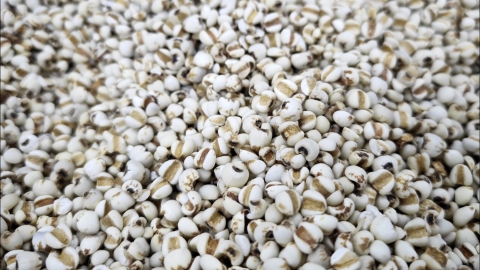How to remove dampness when heavy dampness causes sticky bowel movements
Methods to relieve dampness for sticky stools caused by excessive dampness in the body generally include adjusting diet, maintaining moderate exercise, using dehumidifying foods, improving living environment, and auxiliary TCM (Traditional Chinese Medicine) regulation. Specific details are as follows:

1. Adjust diet: Reduce intake of greasy, sweet, raw, cold, and chilled foods, as these can increase the burden on the spleen and stomach, leading to accumulation of dampness. Increase consumption of spleen-strengthening and dampness-resolving foods such as coix seed (yi mi), red beans, poria (fu ling), and Chinese yam (shan yao), which help the spleen and stomach metabolize excess moisture and alleviate sticky stools.
2. Maintain moderate exercise: Physical activity promotes blood and qi circulation and induces sweating, helping expel excess dampness through perspiration. Choose gentle exercises such as brisk walking, jogging, or yoga, aiming for 3–5 sessions per week, each lasting about 30 minutes. This helps reduce internal dampness retention and improves bowel movement regularity.
3. Use dampness-resolving ingredients: Incorporate dampness-clearing foods into daily meals—such as brewing poria tea, cooking coix seed porridge, or adding small amounts of ginger or Sichuan pepper when stir-frying. These ingredients warm the body, resolve cold-dampness, strengthen the spleen, and promote diuresis. Regular, moderate consumption can help regulate internal dampness and reduce symptoms of sticky stools.
4. Improve living environment: Avoid prolonged exposure to damp environments. Keep indoor areas well-ventilated and dry; close windows promptly during rainy weather to prevent external dampness from entering. Frequently sun-dry clothes and bedding to reduce moisture buildup, thereby minimizing the impact of environmental dampness on the body.
5. TCM-based supportive therapy: For severe dampness, traditional Chinese therapies such as moxibustion or cupping may be used under professional guidance. Moxibustion at acupoints like Zusanli (ST36) and Zhongwan (CV12) can warm the spleen and dispel dampness, while cupping helps unblock meridians and eliminate dampness, supporting improved spleen and stomach function and alleviating sticky stools.
If symptoms such as abdominal pain or bloody stool accompany sticky bowel movements during调理 (regulation), seek medical attention promptly. Individuals with weak spleen and stomach functions should control the amount of dampness-resolving foods consumed to avoid over-drying, which may damage the spleen and stomach.




